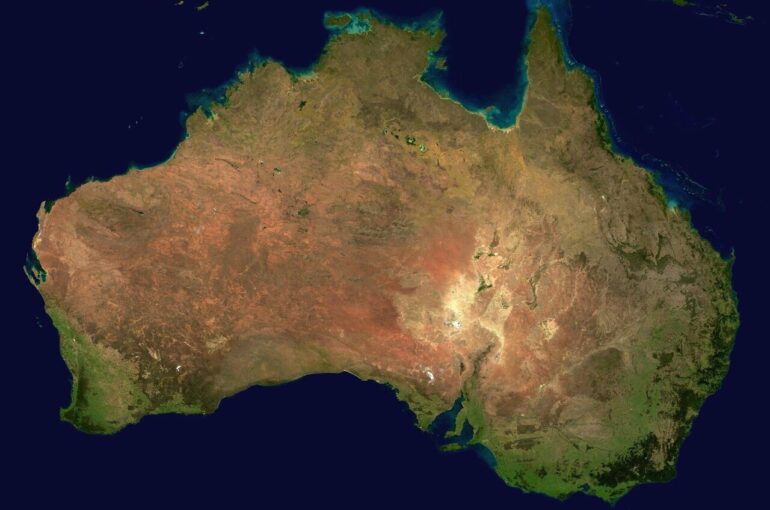End-of-dry-season CO2 pulses recur each year in the atmosphere above the Australian continent, a discovery made by an international research team led by environmental physicist Prof. Dr. André Butz of Heidelberg University.
To investigate the carbon fluxes over Australia, the researchers studied atmospheric CO2 measurements. Their analyses show that CO2 emissions spike when heavy rain falls on dried-out soil, thus activating microorganisms in that soil. The findings suggest that dry regions have a greater influence on the variations in the global carbon cycle than previously thought.
The Australian continent is dominated by dry ecosystems and widely varying precipitation patterns. Generally, at the end of the dry season—when the first rains begin to fall—CO2 emissions over Australia rise sharply.
“This effect is well-known at the local level, but it was never observed at the continental level,” states Eva-Marie Metz, a doctoral candidate in Prof. Butz’s working group at the Institute of Environmental Physics at Heidelberg University.
Data on the atmospheric CO2 concentrations obtained from the Greenhouse Gases Observing Satellite (GOSAT) were analyzed. Using the satellite data from 2009 to 2018, the scientists found that the seasonal pattern of CO2 concentrations over Australia was much more dynamic than previously assumed.
Until now, the lack of measurement data on ground hampered uncovering the mechanisms that cause these variations. The research team fed the GOSAT satellite data into an atmospheric inversion model, which is used to estimate the CO2 flux at the ground level. It became clear that there must be an undiscovered mechanism of CO2 release in Australian terrestrial ecosystems, according to Dr. Sanam Vardag, whose group also conducts research at the Institute of Environmental Physics of Heidelberg University.
Further studies showed that the concentrations of CO2 always rise when dry soils are rewetted by heavy rainfall. This causes the so-called “Birch Effect,” reports Dr. Vardag. Soil microbes that are inactive when dry are reactivated by the moisture and multiply, causing the soil to “breathe” and release CO2.
Plant photosynthesis does not begin until later, so carbon dioxide is not bound at the end of the dry season, thus causing the seasonally rapid rise in CO2 that the international team of researchers was able to discern on the continental level.
Their investigations have provided an explanation on how the variations in the carbon fluxes from land to atmosphere occur. According to Prof. Butz, these results are significant because they suggest that dry regions—such as are dominant in Australia—have a greater influence on the variations of the global carbon cycle than previously believed. “Our findings, the first on a continental scale, can be used for climate modeling and thus contribute to a better understanding of the global climate-carbon feedbacks,” explains the Heidelberg researcher.
The research results were published in Science.
More information:
Eva-Marie Metz et al, Soil respiration-driven CO2 pulses dominate Australia’s flux variability, Science (2023). DOI: 10.1126/science.add7833. www.science.org/doi/10.1126/science.add7833
Provided by
Heidelberg University
Citation:
At the end of the dry season: Carbon dioxide pulses over Australia (2023, March 31)



